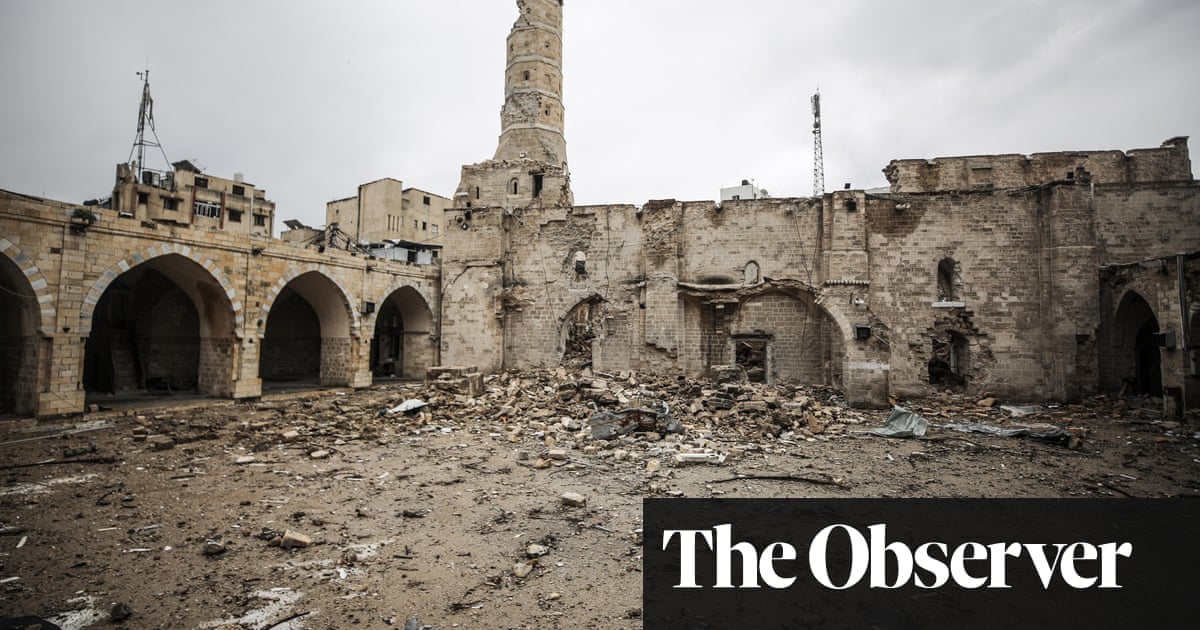Its walls collapsed and its minaret cut short, Gaza’s Omari mosque remains standing but vastly diminished. Around it, the historic old city is also in tatters. The 7th-century mosque, also known as the Great Mosque of Gaza, was Gaza’s most famous and its surroundings a focal point of the Palestinian enclave’s history and culture, but the damage done to its heritage over more than 100 days of Israeli bombardment spreads across the city.
For the few Palestinians who remain, and the far greater number displaced and hoping to return, the culture and history has been reduced to memories.
“The city is a ghost town, people walk around with pale faces and their spirits are tired after having gone through this war. If you walk to the old city of Gaza, you will only remember the memories and feel sickened and saddened by the amount of destruction of cultural and religious sites,” said Bader Alzaharna, who lives in Gaza City despite the intensity of Israel’s ground operation in the area.
“The old city of Gaza, which used to be full of cultural sites, is grey and overcast. Walking in Gaza feels like we are in a movie, in a fictional story, in a fantasy. The scene is apocalyptic.”



Uh… That’s not what they’re doing; they’re saying you can’t deny the race factor in why Israeli lives are viewed as more important than Palestinian lives in the West, and especially in America. Keyword in the West; we’re not talking about Israel itself here.